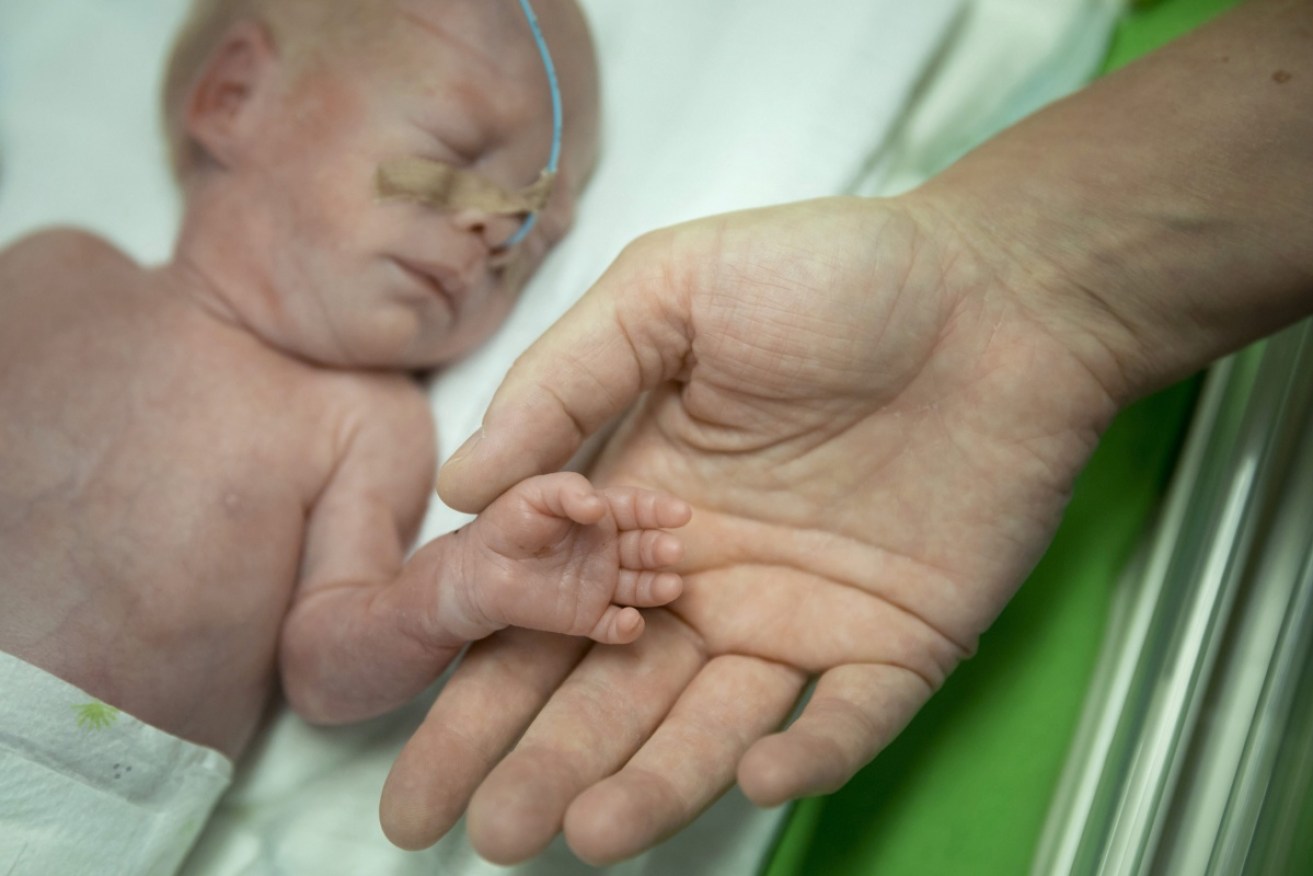Critical insights to help pre-term babies

The study's findings about oxygen levels will give pre-term babies a greater chance of survival. Photo: EPA/AAP
Researchers have come up with a more precise and safe level of oxygen that a very premature baby should receive, to optimise its chances of survival.
The significant breakthrough will lead to thousands more infants around the world surviving an early pre-term delivery, senior research fellow Professor Lisa Askie at the University of Sydney said.
“A primary concern for parents is ensuring their infant survives a premature delivery,” Professor Askie said.
“Identifying a treatment that increases the chances of survival is a major step forward and will lead to thousands more infants around the world surviving an early pre-term delivery.”
In Australia, about 1000 babies a year are born very early, at 28 weeks gestation, and on average about 200 of those babies will die.
Oxygen is a mainstay treatment of premature babies but giving too much can cause serious complications, creating a precarious situation for treating neonatologists.
The safe range of oxygen saturation – the level of oxygen in the blood – has been between 85 per cent and 95 per cent, Professor Askie explained.
“But we didn’t know whether the higher end or the lower end of that is better or worse for the baby,” she said.
An examination of the evidence led by the NHMRC Clinical Trials Centre at the University of Sydney has now found that range should be narrowed to boost survival.
The meta-analysis of five international trials, involving almost 5000 infants, found the chance of survival for a child born before 28 weeks is significantly increased when a higher oxygen saturation level of 91 to 95 per cent is targeted, compared with a lower level of 85 to 89 per cent.
So, for every 1000 pre-term infants treated with higher oxygen targets, on average 28 more would survive, according to the findings published in the Journal of the American Medical Association.
They were also less like to suffer severe necrotising enterocolitis – a nasty disease in which a portion of the bowel dies due to too little oxygen.
However, the higher oxygen target increased the number of infants with damage to the eye’s retina, known as retinopathy.
“The rigorous examination of these five large-scale studies has given us critical insights into managing the care of extremely pre-term babies,” said Professor Askie, who led the study.
-AAP








